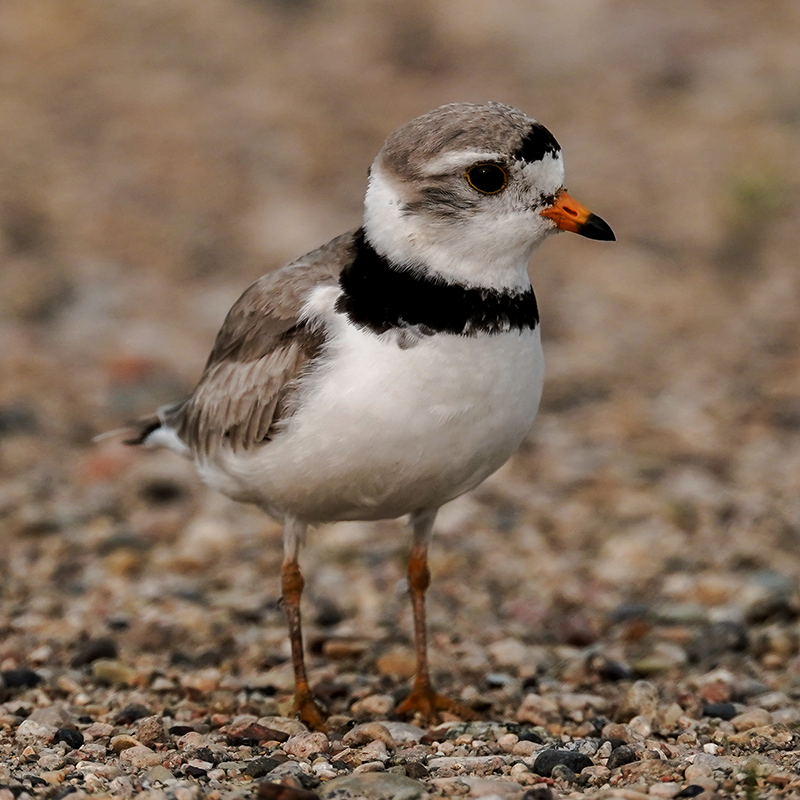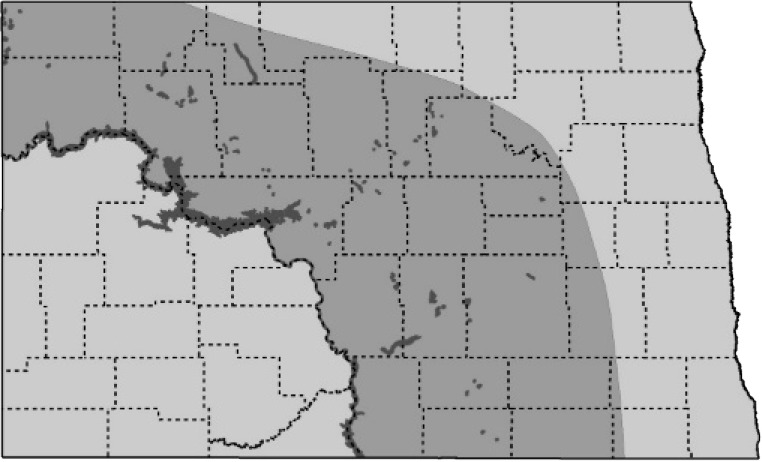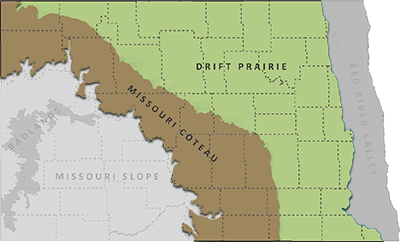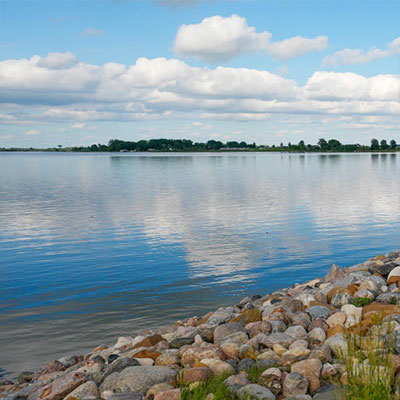Piping Plover

NDGF
L 7.25”, WS 19”, 1.9 oz. White belly and single, narrow black breast band.
Status in North Dakota
Occurs in North Dakota from mid-April to August. Peak breeding season occurs from late May to mid-July.
Reason for SWAP Designation
Regionally and globally imperiled, ND range important (SGCN a., b.).
ND ranks 3rd out of 20 states for highest percent of the global population (9.73%) during the breeding season (eBird).
The Northern Great Plains population (C. m. circumcinctus) was listed as a Federal threatened species on 12/11/1985.
Threats
Loss and degradation of wetlands, drainage and wetland consolidation.
Hydrologic shifts in wetlands of the PPR due to wetland consolidation and drainage, climate and land use changes (i.e. lakeification).
Classified as climate-endangered, Piping Plover is projected to lose more than half of its current distribution by 2050, with no net gains of new areas (Audubon).
Channelization, irrigation, and dam construction along the Missouri River.
High water releases during peak breeding season may flood nests.
Encroachment of woody vegetation onto sandbars reduces nesting habitat availability.
Increasing applications of agrochemicals and adverse impacts to water quality, the wetland vegetative community, and the aquatic invertebrate community.
Human disturbance on sandbars or shorelines.
Environmental contaminants from oil/gas or other environmental spills may enter the Missouri River System or alkali lakes.
More frequent or intense harmful algal blooms.
Aquatic nuisance species spreading and damaging wetland ecosystems.
Nests may be destroyed by recreationists using sandbars or by the release of water during mid-summer when plovers are still on the nest.
Mortality from collisions with overhead lines.
Collisions or displacement from wind turbines is uncertain.
Research and Monitoring
Habitat requirements and demographics have been extensively researched on the breeding grounds.
Information lacking on migration strategies, stopover sites, and wintering behaviors.
The USFWS is the lead agency to work with partners and researchers to develop and ensure a scientifically sound and long-term monitoring plan for Piping Plovers is implemented.
Management Recommendations
- Mimic natural flows on the Missouri River to create sandbar habitat.
- The creation of dredged islands or clearing of sandbar vegetation may provide new nesting habitat for plovers, but the productivity is presumed to be much less than for natural sites.
- Use mechanical and chemical applications to remove vegetation.
- Bury rock piles and remove old buildings to reduce predators.
- Exclusion fences or cages may be erected around nests to reduce nest predation or to exclude cattle.
- Use wildlife-friendly fencing to keep cattle off shorelines or delay grazing until late August.
- Raise awareness among boaters and outdoor enthusiasts to avoid approaching nesting sites, including keeping dogs on leashes, and limit human access to sandbars or sensitive areas where plovers are nesting.
- Follow aquatic nuisance species rules and regulations.




